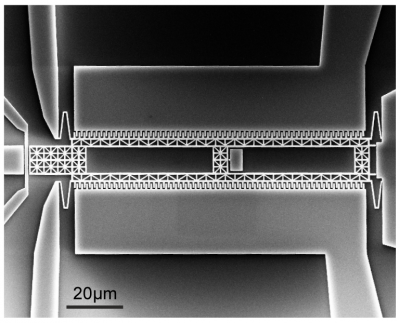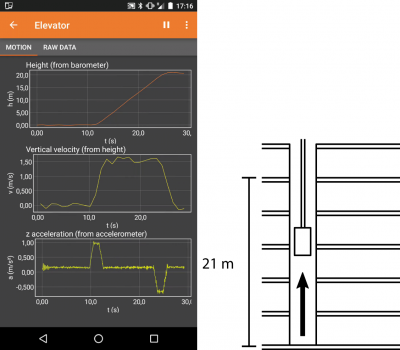Current events
Next talk on Tuesday in 2 days by Katrin Hecker.
News 06.06.2025
New publication:Anisotropic supercurrent suppression and revivals in a graphene-based Josephson junction under in-plane magnetic fields
Site Content:
13.08.2018
Christoph Stampfer becomes a member of the local support committee of the Transducers 2019 – EUROSENSORS XXXIII
Next summer, in June 2019, EUROSENSORS XXXIII is combined with Transducers 2019 bringing together the sensors, actuators and microsystems experts from all over the world together in Berlin.

10.08.2018
New publication: Gate-Defined Electron–Hole Double Dots in Bilayer Graphene

Nano Lett. 18, 4785 (2018) We present gate-controlled single-, double-, and triple-dot operation in electrostatically gapped bilayer graphene. Thanks to the recent advancements in sample fabrication, which include the encapsulation of bilayer graphene in hexagonal boron nitride and the use of graphite gates, it has become possible to electrostatically confine carriers in bilayer graphene and to completely pinch-off current through quantum dot devices. Here, we discuss the operation and characterization of electron–hole double dots. We show a remarkable degree of control of our device, which allows the implementation of two different gate-defined electron–hole double-dot systems with very similar energy scales. In the single-dot regime, we extract excited state energies and investigate their evolution in a parallel magnetic field, which is in agreement with a Zeeman-spin-splitting expected for a g-factor of 2.

10.08.2018
New publication: Detecting Ultrasound Vibrations with Graphene Resonators

Nano Lett. 18, 5132 (2018) Ultrasound detection is one of the most-important nondestructive subsurface characterization tools for materials, the goal of which is to laterally resolve the subsurface structure with nanometer or even atomic resolution. In recent years, graphene resonators have attracted attention for their use in loudspeakers and ultrasound radios, showing their potential for realizing communication systems with air-carried ultrasound. Here, we show a graphene resonator that detects ultrasound vibrations propagating through the substrate on which it was fabricated. We ultimately achieve a resolution of ∼7 pm/(Hz)1/2 in ultrasound amplitude at frequencies up to 100 MHz. Thanks to an extremely high nonlinearity in the mechanical restoring force, the resonance frequency itself can also be used for ultrasound detection. We observe a shift of 120 kHz at a resonance frequency of 65 MHz for an induced vibration amplitude of 100 pm with a resolution of 25 pm. Remarkably, the nonlinearity also explains the generally observed asymmetry in the resonance frequency tuning of the resonator when it is pulled upon with an electrostatic gate. This work puts forward a sensor design that fits onto an atomic force microscope cantilever and therefore promises direct ultrasound detection at the nanoscale for nondestructive subsurface characterization.

06.08.2018
Gerard Verbiest started as Assistant Professor

Gerard Verbiest left our group and started on 1 August 2018 as Assistant Professor at the Department of Precision and Microsystems Engineering (PME) at TU Delft (Netherlands). We wish him every success!

24.07.2018
New publication: Fabrication of comb-drive actuators for straining nanostructured suspended graphene

Nanotechnology 29, 375301 (2018) We report on the fabrication and characterization of an optimized comb-drive actuator design for strain-dependent transport measurements on suspended graphene. We fabricate devices from highly p-doped silicon using deep reactive ion etching with a chromium mask. Crucially, we implement a gold layer to reduce the device resistance from ≈51.6 kΩ to ≈236 Ω at room temperature in order to allow for strain-dependent transport measurements. The graphene is integrated by mechanically transferring it directly onto the actuator using a polymethylmethacrylate membrane. Importantly, the integrated graphene can be nanostructured afterwards to optimize device functionality. The minimum feature size of the structured suspended graphene is 30 nm, which allows for interesting device concepts such as mechanically-tunable nanoconstrictions. Finally, we characterize the fabricated devices by measuring the Raman spectrum as well as the a mechanical resonance frequency of an integrated graphene sheet for different strain values

10.07.2018
Lousberglauf
Following our tradition, members of our Institute participated at the "Lousberglauf 2018”. Withstanding the gruesome heat, Michael (21:15), Markus (23:15), Benedikt (25:53), Alex (26:06) and Christoph (29:51) finished the challenging course together with over 1800 other participants. Congratulations!


28.06.2018
International Master's program in physics: Promotional video
The international Master's program in Physics is a two years program. The first year consists of lectures, seminars and lab courses. The second year is dedicated to an individual research project.

16.05.2018
New publication: Advanced tools for smartphone-based experiments: phyphox

Physics Education 53, 045009 (2018) The sensors in modern smartphones are a promising and cost-effective tool for experimentation in physics education, but many experiments face practical problems. Often the phone is inaccessible during the experiment and the data usually needs to be analyzed subsequently on a computer. We address both problems by introducing a new app, called "phyphox", which is specifically designed for utilizing experiments in physics teaching. The app is free and designed to offer the same set of features on Android and iOS.

